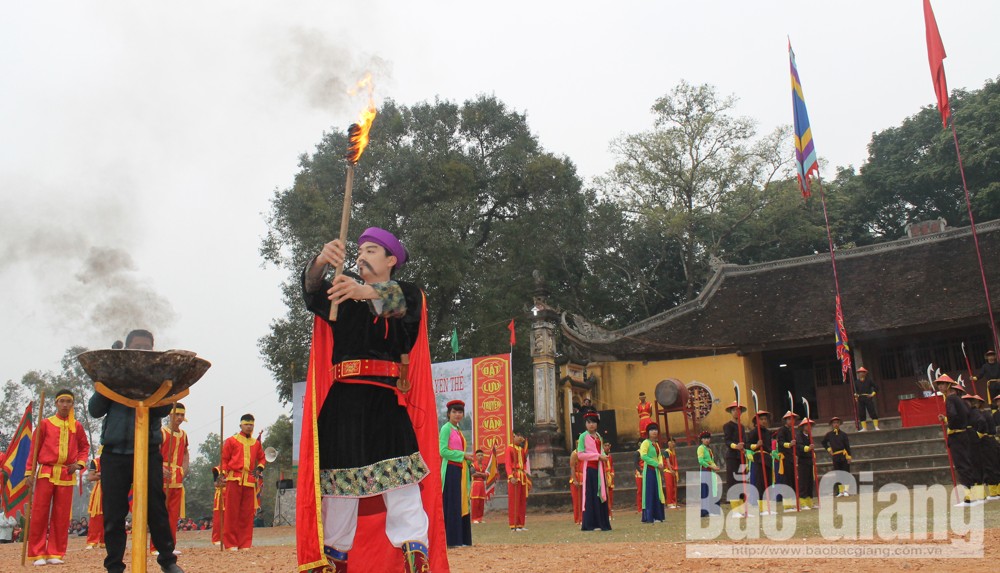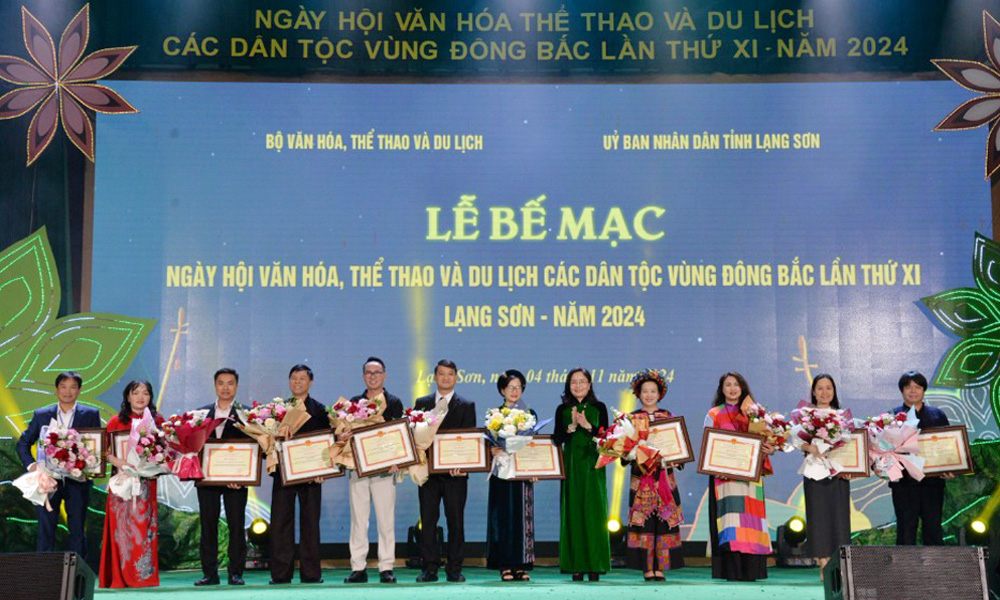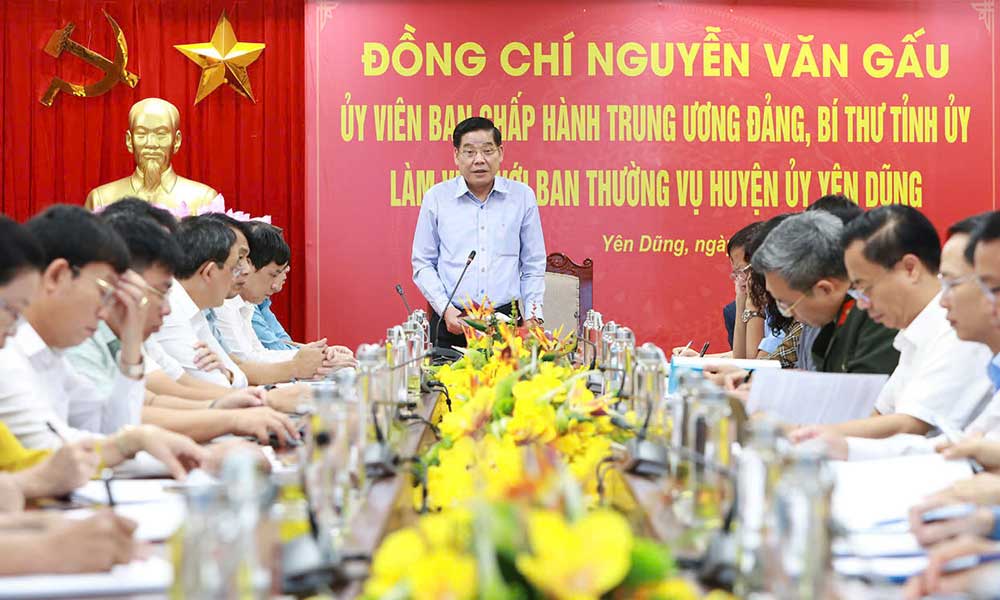Ha communal house - the place where the order to launch the Yen The Uprising was issued
According to documents, on March 16, 1884, Luong Van Nam (De Nam) and his insurgents held a flag-worshipping ceremony at the Ha communal house, officially calling on people to stand up against the French colonialists.
 |
|
Re-enacting the flag-worshipping ceremony of De Nam at the Ha communal house festival. |
Luong Van Nam was born into a farmer family in Khua hamlet, Ha village. He soon became famous as a clever person. Especially, he boasted prominent military talent, and won trust and support from the people. Before 1884, De Nam led the Ha villagers in struggling against Qing invaders.
After the enemy occupied the Tinh Dao citadel and then marched to Thai Nguyen, he and the Yen The insurgents blocked them in Duc Lan, Phu Binh, Thai Nguyen, and then went back to the Ha communal house to hold a flag-worshipping ceremony to launch the Yen Uprising.
In 1892, after Luong Van Nam was killed, Hoang Hoa Tham took over, continuing to raise the flag of the uprising to expel the French colonialists during 30 years of hardship but full of glory (1884-1913).
The Ha communal house was built in the Le Dynasty (the 17th century). With the name "Phuc Tho Dinh", it was originally an ancient communal house built by the people of the ancient The Loc village (including Dinh Ha, Chau, Quyen, and Duc villages) to worship Cao Son Quy Minh.
In 1885, when the French occupied Yen The, they viciously devastated Ha village and destroyed its communal house and pagoda. The brutal action deepended the people's hatred. In the first postponement, Hoang Hoa Tham used public funds to help local people hire workers to rebuild the Ha communal house and pagoda.
Therefore, the current Ha communal house and pagoda were built around this time (1894-1895), located on a low hill between three villages (Khua, Quyen and Le). The communal house consists of three compartments and two large lean-tos, a bronze pillar and a three-room house on its back. In the relic site, the people still preserve a valuable ancient ironwood forest.
On the occasion of the Tet Han Thuc (Cold Food Festival) (April 11, 1892), De Nam was betrayed and killed with poison by his subordinate De Sat. A few days later, Hoang Hoa Tham killed De Sat and organized a flag-worshipping ceremony in the Dong communal house (Viet Yen) to restore the movement and continue to lead the insurgents to stand up against the French.
Amiring the heroic mettle of Luong Van Nam, the Ha villagers remembered, sculpted his statue and made an altar to worship him at the communal house as a tutelary god. There are two sentences in the communal house: Nhan sinh tu co thuy vo tu?/Luu thu đan tam chieu han thanh (Is there anyone who does not die, in the past and at present? Let your faith be kept in history).
In Bac Giang city, there is a road named Luong Van Nam connecting Giap Hai street and Le Loi street. Tan Yen district has built the Luong Van Nam Square. In 1994, the Ha communal house and pagoda were classified as a historical-cultural relic site by the Ministry of Culture and Information. In 2012, the Ha communal house was one of 23 sites belonging to the Yen The Uprising relic system recognised by the Prime Minister as a special national relic site.
Tien Dat
 Bắc giang
Bắc giang
















Reader's comments (0)